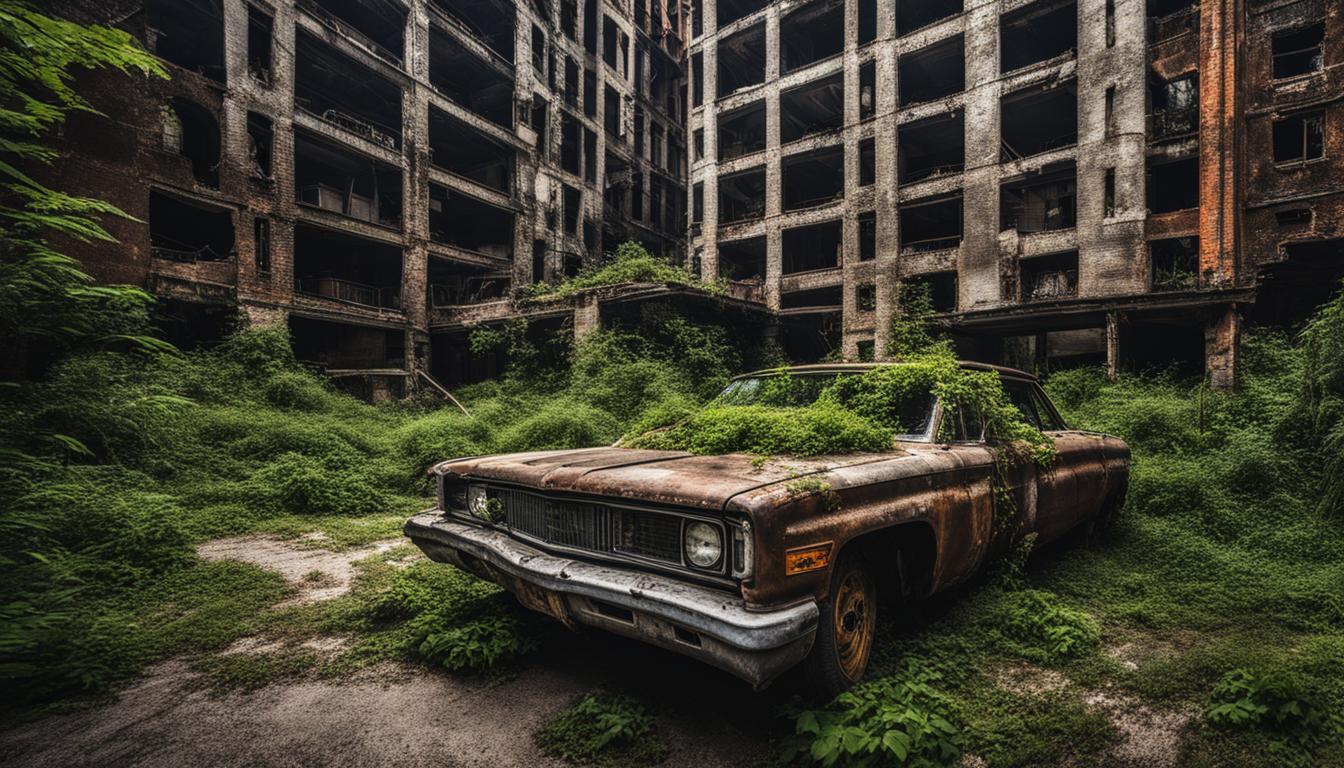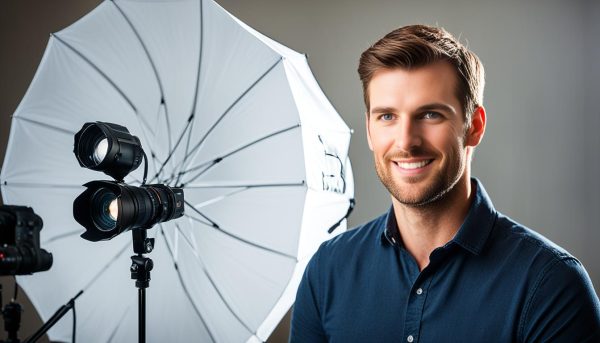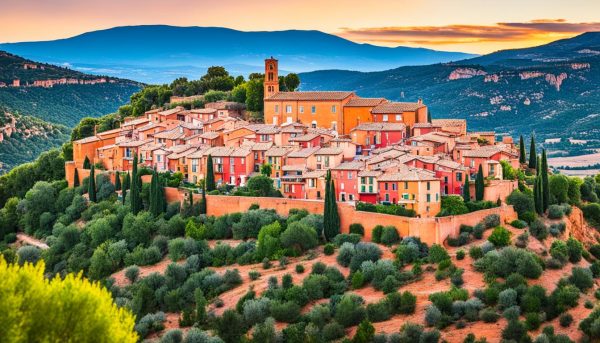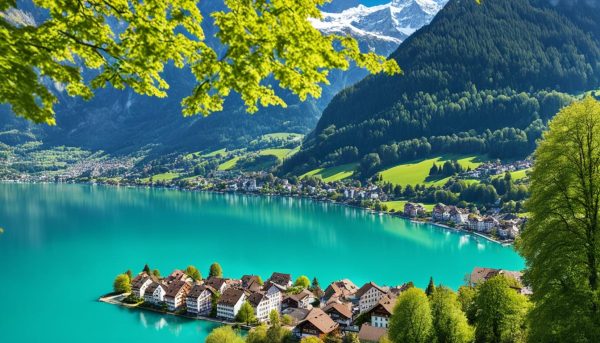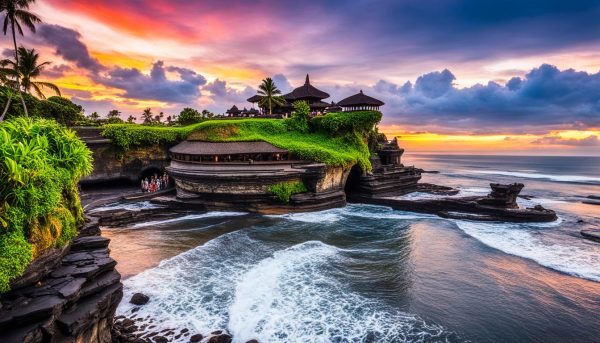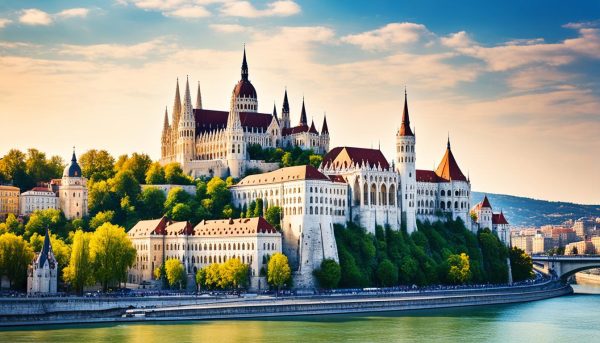The hustle and bustle of the city can be overwhelming, but amidst the chaos lies the true essence of city life waiting to be captured through the lens of a camera. Urban exploration is the art of venturing into the hidden corners of a city to discover its raw beauty and document its unique character through photography.
Urban exploration provides a unique perspective of the city that cannot be seen from a tourist’s point of view. It allows us to connect with the city on a deeper level and uncover the hidden gems that are often overlooked. Through the eyes of an urban explorer, the city transforms from a simple concrete jungle to a living, breathing entity full of life and energy.
Whether you are capturing the towering skyscrapers, the vibrant street art, or the bustling city life, urban exploration provides endless photographic opportunities. With a camera in hand, you can create a visual diary of the city and tell its story through your own unique perspective.
Key Takeaways:
- Urban exploration allows us to capture the true essence of city life through photography.
- It provides a unique perspective of the city that cannot be seen from a tourist’s point of view.
- Urban exploration helps us to connect with the city on a deeper level and uncover hidden gems.
- With a camera in hand, we can create a visual diary of the city and tell its story through our own unique perspective.
- Urban exploration offers endless photographic opportunities for photographers to showcase their creativity and skills.
The Thrill of Urban Exploration
Urban exploration is not for the faint of heart. It’s an adrenaline-fueled adventure, full of excitement and danger. Exploring the hidden corners of a city requires a sense of adventure and a willingness to take risks. But for those brave enough to take on the challenge, the rewards are endless.
From scaling towering buildings to navigating dark, abandoned spaces, urban exploration offers a unique perspective on the city. It allows us to see the world around us in a new light, to discover the beauty in the unexpected, and to capture the essence of urban life through the lens of a camera.
The thrill of urban exploration lies in the unknown. Every location is a mystery waiting to be uncovered, every corner a potential danger. But with the right preparation, a sense of curiosity, and a willingness to take risks, urban exploration can be an incredibly rewarding experience.
Challenges and Risks
“The biggest challenge in urban exploration is navigating the unknown,” says seasoned urban explorer John Smith. “You never know what you’re going to encounter, so you have to be prepared for anything.”
Urban exploration can be dangerous, and it’s important to take precautions to stay safe. Some of the risks associated with urban exploration include:
- Falling from heights
- Encountering hazardous materials
- Encountering security personnel or law enforcement
- Becoming trapped or lost
To minimize the risks of urban exploration, it’s important to plan ahead and take necessary precautions. This may include scouting the location beforehand, bringing appropriate gear like climbing ropes and safety harnesses, and having a backup plan in case of emergency.
The Rewards of Exploration
The rewards of urban exploration are many. From the rush of adrenaline that comes with scaling a building to the sense of accomplishment that comes with conquering a new space, urban exploration is a thrilling and exhilarating experience.
But the rewards go beyond the physical. Urban exploration offers a unique perspective on the city, allowing us to discover the beauty in the unexpected. It allows us to capture the essence of urban life in a way that no other art form can.
Finding Beauty in the Concrete Jungle
When we think of cities, we often imagine towering buildings, bustling streets, and a sea of concrete. However, urban exploration allows us to uncover the hidden beauty within the concrete jungle, and capture it through the lens of a camera.
One of the most fascinating aspects of urban exploration is discovering the mesmerizing architecture that exists within cities. From soaring skyscrapers to ornate bridges, urban environments boast a wealth of breathtaking structures.
| City | Iconic Architecture |
|---|---|
| New York | The Empire State Building, One World Trade Center, Brooklyn Bridge |
| Paris | Eiffel Tower, Notre-Dame Cathedral, Arc de Triomphe |
| Hong Kong | ICC Tower, Bank of China Tower, Tsing Ma Bridge |
But it’s not just the architecture that’s captivating – the colorful street art that adorns many city walls is also a delight to photograph. From vibrant murals to thought-provoking graffiti, urban exploration allows us to discover the creativity that flourishes within the city streets.
Beauty can also be found in the unexpected moments that unfold on the city streets. From the bustling energy of a busy market to the quiet solitude of a hidden alley, urban exploration allows us to capture the diverse experiences and emotions that are part of the urban landscape. By focusing on the small details of city life, we gain a deeper appreciation for the communities that exist within them.
Through urban exploration, we can find beauty in unexpected places and capture captivating photos that showcase the true essence of city life. So grab your camera, and let’s explore the concrete jungle together.
Capturing Urban Landmarks
Urban landmarks are iconic structures that define a city’s identity. From the Eiffel Tower to the Empire State Building, these landmarks stand out in the city’s skyline and offer endless photographic opportunities. However, capturing these landmarks in a unique and creative way can be a challenge.
One way to approach photographing urban landmarks is to experiment with different perspectives. Instead of taking a straight-on shot, try capturing the landmark from an unusual angle. For example, shoot from ground level and capture the landmark’s reflection in a nearby puddle or shoot from a rooftop and capture the city’s skyline as the backdrop.
Another technique is to experiment with lighting. Photographing landmarks during the golden hour, the hour after sunrise or before sunset, can add warm, soft light to your photos and create a magical ambiance. Nighttime photography can also be an excellent option, as the city lights can enhance the landmark’s beauty and grandeur.
When capturing urban landmarks, it’s essential to pay attention to the surroundings. Including people or other buildings in your photo can provide context and add depth to your composition. However, be mindful of the crowds and the noise that come with photographing in public areas.
| Tip | Example |
|---|---|
| Use a tripod to stabilize your camera and reduce blur | For example, the slow shutter speed required for nighttime photography can lead to shaky photos, but using a tripod can help avoid this issue. |
| Experiment with different camera lenses to achieve different effects | For example, using a wide-angle lens can capture the landmark and its surroundings, while a telephoto lens can compress the distance and create a more intimate composition. |
| Shoot in RAW format to have more flexibility in post-processing | RAW files contain more data than JPEGs and allow for more adjustments in post-processing, such as adjusting the exposure or changing the white balance. |
Remember that each urban landmark has a unique story to tell. By capturing it in your photos, you’re not only preserving a piece of the city’s history but also sharing its beauty with the world.
Unveiling the Soul of City Streets
City streets are where the soul of a city comes to life. They are where you can witness the purest form of urban interactions and capture the essence of city life through photography. From street vendors to performers, every corner of the city is a stage for human interaction. By exploring these bustling streets, you can document moments that tell the stories of urban dwellers.
One of the most powerful ways to capture the soul of city streets is through candid portraits. These are images that are taken without the subject’s knowledge or consent, allowing you to capture moments that are unrehearsed and genuine. By photographing people in their natural habitats, you can showcase the diversity and beauty of urban culture.
“Photography is the art of observation. It has little to do with the things you see and everything to do with the way you see them.” – Elliott Erwitt
Another way to capture the soul of city streets is through spontaneous interactions. These can be anything from a conversation between strangers to a child playing with a stray animal. These moments may be fleeting, but they offer a glimpse into the heart of the city.
Photography has the power to freeze a moment in time and preserve it for future generations. By capturing the soul of city streets, you are documenting the unique stories that make each city special. From the busy markets of Marrakech to the colorful streets of Havana, every city has a story waiting to be told.
- Tip: To capture the soul of city streets, take your time and be patient. Observe your surroundings and look for moments that tell a story. Engage with the community and don’t be afraid to strike up a conversation. The more you immerse yourself in the city, the better you will understand its soul.
Exploring Abandoned Places
Abandoned places offer a unique opportunity for urban explorers to witness the beauty of decay and document the history of neglected structures. From forgotten hospitals to crumbling factories, these abandoned places can transport you to a different time and provide an eerie but captivating experience.
Urban exploration of abandoned places requires caution and preparation. Always research the locations beforehand and respect any “No Trespassing” signs. Wear appropriate clothing and equipment, such as sturdy shoes and flashlights, since these places may be hazardous and dark. And remember to leave the sites as you found them, without causing any damage or disruption.
“Exploring abandoned places can take you on a journey through time and history, allowing you to capture the haunting beauty of decay.”
When capturing photos of abandoned places, consider the atmosphere and mood of the site. The decay and destruction can provide a unique backdrop for stunning shots, while also challenging your skills in framing and composition. Experiment with angles and perspectives to capture the grandeur of the abandoned building or the intricate details of its decay.
When editing your photos of abandoned places, consider enhancing the colors and tones to bring out the emotions of the scene. Adding filters or adjusting the brightness and contrast can emphasize the eerie or haunting feel of the abandoned place.
Here is an example of a table comparing different types of abandoned places:
| Type of Abandoned Place | Location | Level of Difficulty |
|---|---|---|
| Abandoned Hospital | Urban Area | Medium |
| Abandoned Factory | Rural Area | Hard |
| Abandoned School | Suburban Area | Easy |
Exploring abandoned places can offer a thrilling and mesmerizing experience for urban explorers. Just remember to approach these sites with caution and respect for their history and environment.
Nighttime Urban Photography
Exploring the city at night can be a thrilling and visually rewarding experience for urban explorers. The city takes on a different character after dark, with the bright lights and bustling streets creating a dynamic atmosphere perfect for photography.
Nighttime photography is a popular genre for urban explorers, as it offers a chance to capture the vibrancy and energy of the city in a unique way. With the right techniques and equipment, nighttime photography can result in stunning and atmospheric images.
One key element of nighttime photography is using a tripod to keep the camera steady during long exposures. This allows for capturing the bright lights of the city with minimal blur. Experimenting with longer shutter speeds can also create stunning light trails from passing cars and trains.
Another technique to capture the essence of the city at night is to use low light photography settings such as a high ISO and a wide aperture. These settings allow for capturing more light and creating a shallow depth of field that can emphasize a particular subject, such as a street performer or a landmark.
“Nighttime photography is like painting with light, creating visual poetry out of the raw elements of the urban landscape.”
When venturing out at night, it’s important to prioritize safety and be aware of your surroundings. Stick to well-lit areas and avoid isolated places or dangerous neighborhoods.
The world of nighttime urban photography is filled with endless possibilities and is waiting for you to capture its beauty. With a little creativity, planning, and the right gear, you’ll be able to capture the vibrant and magical essence of the city at night.
Embracing the Diversity of Urban Culture
Urban exploration is not only a means to capture the physical beauty of a city, but also an opportunity to embrace the diverse cultures that thrive within it. From the colorful festivals and parades to the bustling markets and street vendors, the urban landscape is a mosaic of different traditions and lifestyles.
Photography allows us to document and celebrate this diversity, capturing candid moments and candid portraits that tell the stories of urban dwellers. By embracing the culture of the city, we can gain a deeper appreciation for its people and their way of life.
Capturing Urban Diversity through Photography
One way to showcase the diversity of urban culture is through street photography. By immersing oneself in the daily life of the city and interacting with its inhabitants, photographers can capture the unique spirit and character of each community.
Tip: To capture the authenticity of street life, try shooting from the hip or using a longer lens to maintain a discreet distance.
Another way to explore urban culture is by attending festivals and cultural events. These provide a rich opportunity to document vibrant colors and traditions unique to particular communities. From the colorful Holi festival to the solemn Day of the Dead celebration, each event has its own unique style and character.
The Value of Diversity in Urban Exploration
Embracing diversity is not only important for cultural understanding, but also for creating a more complete urban exploration experience. By seeking out diverse neighborhoods, restaurants, and landmarks, urban explorers can gain a more nuanced understanding of the city and its people.
Tip: When exploring diverse neighborhoods, try to connect with local communities and businesses to gain a deeper insight into their history and culture.
Navigating Legal and Ethical Considerations
Urban exploration is an exciting and rewarding activity that requires careful consideration of legal and ethical guidelines. As urban explorers, we must respect the laws and regulations that govern public and private property, as well as the well-being of the communities we explore.
It’s important to note that urban exploration may be considered trespassing in some cases, and could result in criminal charges or civil lawsuits. Therefore, it’s essential to research the legal status of the locations you plan to explore and obtain permission when necessary.
Legal Considerations
When it comes to legal considerations in urban exploration, one of the most important factors to consider is the concept of “trespassing.” Trespassing is defined as the act of entering someone else’s property without permission or legal right to do so. Depending on the location and circumstances, trespassing can be considered a criminal offense or a civil wrong.
| Types of Trespassing | Consequences |
|---|---|
| Criminal Trespassing | Can result in fines, imprisonment, or both |
| Civil Trespassing | Can result in a lawsuit and financial damages |
It’s important to understand the legal status of the locations you plan to explore and obtain permission when necessary. Some locations may be considered private property, while others may be publicly accessible but have specific rules and restrictions.
Ethical Considerations
In addition to legal considerations, urban exploration also involves ethical considerations. As explorers, we have a responsibility to respect the communities and environments we explore.
One of the most important ethical considerations in urban exploration is preserving the integrity of the locations we visit. This means avoiding any actions that could damage or disrupt the environment, including vandalism, theft, or littering.
Another important ethical consideration is respecting the privacy of individuals. As urban explorers, we may come across people in their homes or private spaces. It’s important to respect their privacy and avoid taking photos or entering spaces without their consent.
By understanding and adhering to both legal and ethical guidelines, we can ensure that urban exploration remains a safe, respectful, and rewarding activity for all.
Editing and Showcasing Your Urban Exploration Photos
Once you’ve captured your urban exploration photos, it’s time to showcase your work and share it with the world. But before you do that, it’s essential to edit your photos to enhance their visual appeal and bring out the best of your shots.
Editing photos can be a tricky process, but with the right tools and techniques, you can transform your raw images into stunning works of art. Start by adjusting the exposure, contrast, and color balance of your photos. Experiment with different filters and effects to create a unique style that reflects your vision as a photographer.
While editing your photos, don’t forget to keep the essence of urban exploration intact. Avoid over-processing your images and maintain their natural, authentic feel. Emphasize the gritty, raw character of the urban landscape and capture the beauty in its imperfections.
Once your photos are edited and ready to go, it’s time to showcase your work. There are several platforms and methods you can use to share your photos with the world, such as social media, online galleries, or even print exhibitions.
Social media platforms like Instagram, Facebook, and Twitter allow you to share your work with a vast audience and build a community of fellow urban explorers. Create a theme for your feed and post regularly to maintain engagement. Use relevant hashtags to reach a broader audience and connect with other photographers.
If you prefer a more curated approach, consider creating an online gallery dedicated to your urban exploration photos. Platforms like Flickr, 500px, or Behance allow you to showcase your work in a professional, polished manner and gain exposure to a wider audience of art lovers and collectors.
For a more traditional approach, you can print and exhibit your work in local galleries or art shows. Not only does this allow you to share your work in a tangible, physical form, but it also gives you the opportunity to network with other artists and build valuable connections in the art world.
“Urban exploration is all about capturing the essence of the city through photography. Editing and showcasing your photos is just as important as the act of exploration itself. Let your photos tell the story of the city and share it with the world.”
Conclusion
Urban exploration is a unique and thrilling way to capture the essence of city life through photography. It allows us to discover the hidden beauty within the concrete jungle, unveil the soul of city streets, and embrace the diversity of urban culture.
Through exploring abandoned places, nighttime urban photography, and iconic landmarks, we can capture the grandeur and allure of urban environments. However, it’s important to navigate legal and ethical considerations and ensure the safety and preservation of these spaces.
Editing and showcasing our urban exploration photos is a crucial step in sharing our experiences and connecting with fellow explorers. By enhancing and displaying our work, we can not only document our adventures but also inspire others to see the city in a new light.
Urban exploration allows us to escape the mundane and discover the magic that lies within our daily surroundings. As we navigate the challenges and rewards of exploring the hidden corners of the city, we are able to capture the true essence of urban life through the lens of a camera.
FAQ
What is urban exploration?
Urban exploration is the practice of exploring and documenting abandoned or hidden spaces in urban areas. It involves going off the beaten path to discover the hidden gems and overlooked beauty of the city.
Is urban exploration legal?
While urban exploration itself is not illegal, trespassing on private property or breaking any laws is. It’s important to respect the boundaries and regulations of the places you explore to ensure your safety and the preservation of these locations.
What are the risks involved in urban exploration?
Urban exploration can involve physical risks such as unstable structures, hazardous materials, or encounters with wildlife. It’s crucial to be aware of these risks and take necessary precautions, such as wearing protective gear and exploring with a group for added safety.
How can I start urban exploration?
To start urban exploration, begin by researching the areas you want to explore and familiarize yourself with any legal restrictions or safety guidelines. Equip yourself with appropriate gear, including a camera for documenting your journey, and start exploring with a curious and respectful mindset.
What equipment do I need for urban exploration photography?
While the specific equipment you need may vary, it’s recommended to have a camera with different lenses to capture various perspectives and lighting conditions. Other essential items include a tripod for stability, spare batteries, memory cards, and a flashlight for exploring dimly lit areas.
How can I ensure the safety of myself and others during urban exploration?
Safety should be your top priority during urban exploration. Always let someone know about your plans and expected return time. Explore with a group whenever possible, and have basic first aid knowledge. Stay aware of your surroundings and trust your gut instincts if a situation feels unsafe.
Can I share my urban exploration photos online?
Absolutely! Sharing your urban exploration photos online is a great way to connect with fellow explorers and showcase your work. Make sure to respect any guidelines or regulations set by the platforms you choose and always give credit to the locations you photograph.
How can I edit my urban exploration photos to enhance their impact?
Editing your urban exploration photos can help enhance their visual impact. Experiment with adjusting brightness, contrast, and saturation to bring out the details and mood of your images. Consider using software tools like Adobe Lightroom or Photoshop to fine-tune your edits.
Are there any ethical considerations I should be aware of when urban exploring?
Yes, it’s important to approach urban exploration with respect for the places and communities you encounter. Avoid damaging or removing any objects, leave locations as you found them, and never share or disclose the exact addresses of the places you explore to prevent vandalism or illegal activities.
Can I sell my urban exploration photos?
Yes, you can sell your urban exploration photos, especially if you have captured unique and compelling images. Consider reaching out to stock photography websites, galleries, or even local businesses that may be interested in purchasing prints or licensing your photos for commercial use.

